Original text by Jamie Slaven, revised and updated by Dr Steven Douglas in 2023
The Berowra Valley National Park is home to some rare native animals. Many of these threatened species are talked about in this section.
Glossy Black Cockatoo Calyptorhynchus lathami
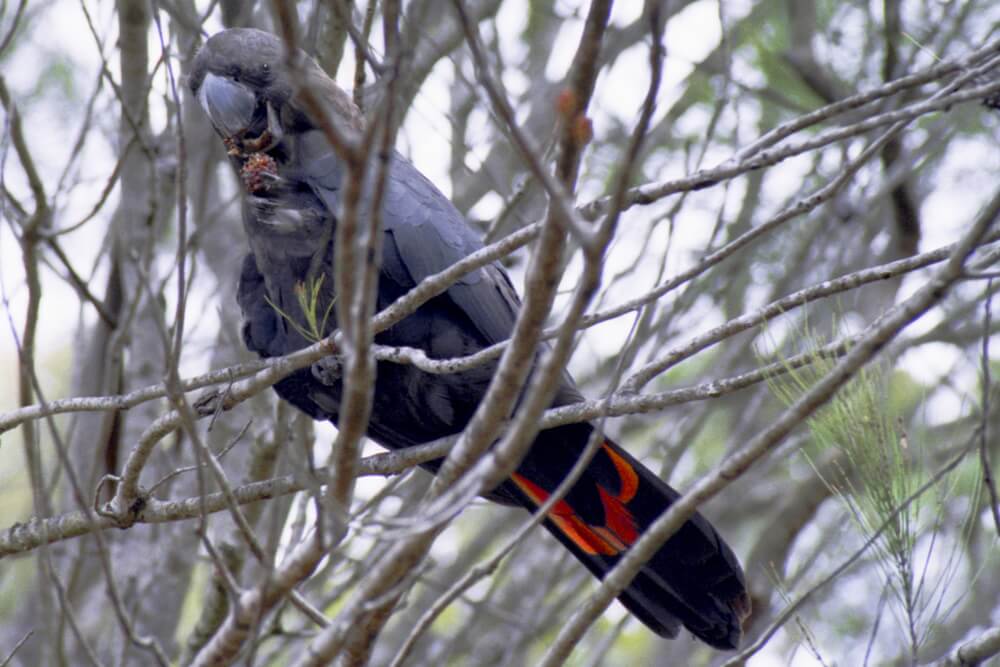
The adult male is mainly dull black in colour with two bright red panels visible on the tail. The bill, eye ring and legs are dark grey. The female is similar in appearance to the male but has irregular yellow patches around the neck and head and orange-red panels on the tail. The Glossy Black Cockatoo is 480mm long and differs from the Red-tailed Black Cockatoo in its inconspicuous crest and distinctive soft, wavering and plaintive calls.
The South-eastern Glossy Black Cockatoo is found in Victoria, New South Wales and Queensland, scattered mainly along the east coast and in adjacent inland forests. The species is present in the Sydney Region with populations known to inhabit the forests and woodlands of the Berowra Valley National Park. The Glossy Black Cockatoo feeds almost exclusively on the cones of sheoaks (also known as Casuarinas) including the Black Sheoak Allocasuarina littoralis, Forest Oak Allocasuarina torulosa, Scrub Oak Allocasuarina distyla,and Drooping Sheoak Allocasuarina verticillata. It uses its beak and feet to open the tough wooden cones to eat the seeds inside. Glossy Black Cockatoos are usually seen in small flocks moving through the forest searching for food and roosting areas. Tree hollows provide protected nesting and breeding areas for this rare bird.
The main threat to the long-term survival of the Glossy Black Cockatoo is the destruction of habitat through land clearing. However, too frequent or severe bushfires, and some forms of hazard reduction burning can also cause a loss of food resources, places to roost and nesting sites. The species is quite mobile and appears able to move considerable distances to alternative habitat in response to temporary losses due to fire. However, extensive wildfires and habitat fragmentation mean that it is increasingly difficult for this species to move to suitable habitat. Its threat status was increased from Vulnerable to Endangered after the 2019-20 wildfires in south-eastern Australia.
Threatened Owls of the Park
The Southern Boobook, Barn Owl, Powerful Owl, Masked Owl and possibly the Barking Owl occur in the Berowra Valley National Park. Owls are important indicators of the health of the natural environment because they are at the top of the food chain. They often have specific habitat requirements, such as tree hollows for nesting and roosting, and their continued presence in an area usually means an abundance of prey items and the presence of tree hollows, which may also be used by other hollow-dependent animals. This article focuses on the Powerful and Masked Owls, the two threatened species known to occur in the Park.
The Powerful Owl is the largest (600 to 660 mm) of Australia’s owls, the males being somewhat larger than the females. It is readily located from its loud “woo-hoo” call and is identified by its large size and bold chevrons (v-shaped markings) on the breast and belly. Powerful Owls typically live in pairs and have a permanent territory that can be as small as 300 ha during the breeding period (usually late June to January) and as large as 1500 ha at other times.
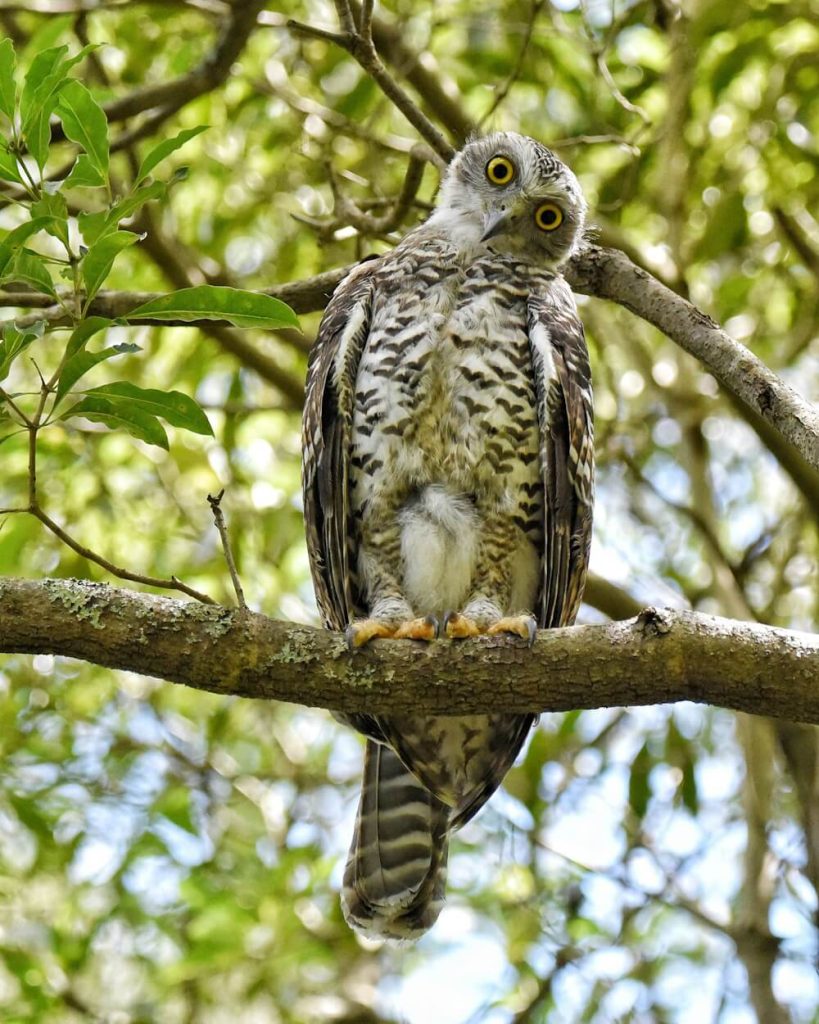
They are generalist predators, feeding mainly on arboreal mammals such as possums and gliders, but will also take ground dwelling mammals (bandicoots, marsupial mice), flying-foxes and large birds (parrots, cockatoos and waterfowl). A pair of Powerful Owls may only forage in part of the territory at any one time and then utilise another part of the territory once local food supplies have been exhausted.
Natural habitats of the Powerful Owl are open sclerophyll forests and woodlands, sometimes where there are dense forests nearby. They are often seen roosting during the day in old-growth wet forest that has a dense understorey, and often near permanent streams. In the greater Sydney area, they are often seen roosting in stands of Coachwood Ceratopetalum apetalum. Each Powerful Owl tends to have several favoured roost trees, which it uses year after year. They rotate between these roosts; each roost being used for several days or weeks at a time. Adults usually roost on horizontal, often bare branches, 2 to 20 m above the ground, from which they can look out in several directions, either in the tree canopy or undergrowth. During the breeding period, the male usually roosts in a tree that is very close to the nest site.
Powerful Owls nest in hollows in large old trees, usually in living eucalypts that grow near creeks. The hollows are usually located within or below the canopy and typically, are large vertical hollows such as broken-off tree trunks and, occasionally, horizontal or sloping limb spouts. Pair-bonds are usually life-long, and a successful breeding pair will normally produce two young birds to fledging per year. In Berowra Valley National Park, breeding pairs of Powerful Owls have been recorded along Sam’s Creek, Still Creek (a good spot is near the junction with a drainage line to the south-west of Charlton’s Creek Road, Berrilee), in the Galston Gorge area (especially along a tributary of Berowra Creek, north of the Gorge), and along Pyes Creek.
The Powerful Owl is a threatened species in NSW. Its life cycle is likely to be disrupted if:
- large areas of habitat are cleared or degraded;
- fire regimes are detrimentally altered, removing vegetation that provides habitat for owl prey;
- predation pressure from introduced feral carnivores (cat and fox) significantly decrease the abundance of ground dwelling mammals (potential owl food) in preferred foraging and nesting sites of the owl and
- mature eucalypts with hollows are disturbed or removed.
The southern subspecies of the Masked Owl occupies a home range of 5 to 10 km2 within a diverse range of wooded habitats that provide large hollow-bearing trees for roosting and nesting and nearby open areas for foraging. This can include forests, remnants within agricultural land or almost treeless plains. However, the core range of a breeding pair during the breeding period can be as little as 150 ha.
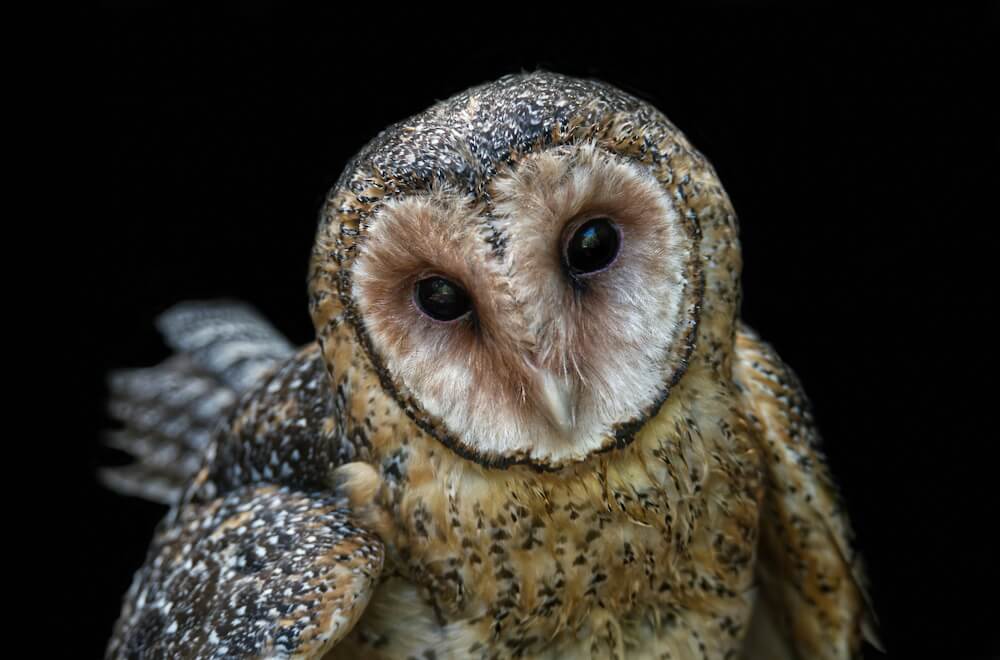
Masked Owls prey principally on terrestrial mammals, including rodents and marsupials, although possums, gliders, bats, birds, lizards and rabbits may be taken opportunistically.
Masked Owls nest in hollows in trunks and in near-vertical spouts of large, usually live trees. They often nest in prominent trees in forest, woodland, treed farmland, remnant patches of vegetation and rarely in trees on the edges of towns or suburbs. Heights of nest hollows usually range from 10 to 30 m. Suitable hollows are 1 to 3 m deep with the diameter of the entrance being 45 to 100 cm.
The usual breeding period for the Masked Owl is March to July but can last up to September in good seasons. Pairs form life-long bonds and can produced between one and four young, usually two or three, per year.
Roost sites are usually in hollows of large trees, often in riparian forest, and may be the same hollows that are used for nesting. Masked Owls less commonly roost and nest in caves. In the Park, Masked Owls seem to forage mostly on the ridges and upper slopes, and roost and nest in gully areas. Likely roosting locations are the lower Sam’s Creek gully area near Berowra, the junction of Still Creek and the tributary to the south-west of Charlton’s Creek Road in Berrilee, the area around The Steele Military Bridge on Berowra Creek at Hornsby, and along Crosslands Creek.
Habitat clearance is the main reason for the decline in the range of this species. The reason for the low density of Masked Owls, however, is unknown. Although food does not appear to be a major limiting factor on the east coast of Australia, the apparent decline in inland areas may be linked to the decline in the abundance of small mammals. Within forests on the east coast, the availability of nest trees could be declining, but the scarcity of Masked Owls in logged forests is more likely to be because the vigorous regrowth after logging makes the habitat less suitable for foraging.
Further Reading
Higgins, P.J. & Davies, S.J.J.F. (1996) (eds). Handbook of Australian, New Zealand and Antarctic Birds. Vol 3: Raptors to Pigeons Oxford University Press, Melbourne.
Olsen, P. (1998). Australia’s Raptors: Diurnal Birds of Prey and Owls. Birds Australia Conservation Statement 2: 1-16.
Schodde, R. & Mason, I.J. (1980). Nocturnal Birds of Australia Lansdowne, Melbourne.
Threatened Frogs
Karen Thumm, Jacquie Recsei, Michael Mahony
Many amphibian species are in decline, often owing to the pollutants entering the Park from the surrounding urban and industrial areas. Others appear to be less affected, such as the ‘tennis-ball frog’, more formally known as the Eastern Striped Marsh Frog or Limnodynastes peronii and the Common Eastern Froglet, Crinia signifera, a small ubiquitous frog found frequently in small puddles on fire trails.
The Park has records, both historic and recent, of two threatened frog species: the Giant Burrowing Frog and the Red-crowned Toadlet. They are both found mainly in sandstone areas, with the Giant Burrowing Frog using clean, small creeklines for breeding, and sandy ridge-tops for foraging and as refuge sites. This frog prefers ridge-tops that are not near build-up areas.
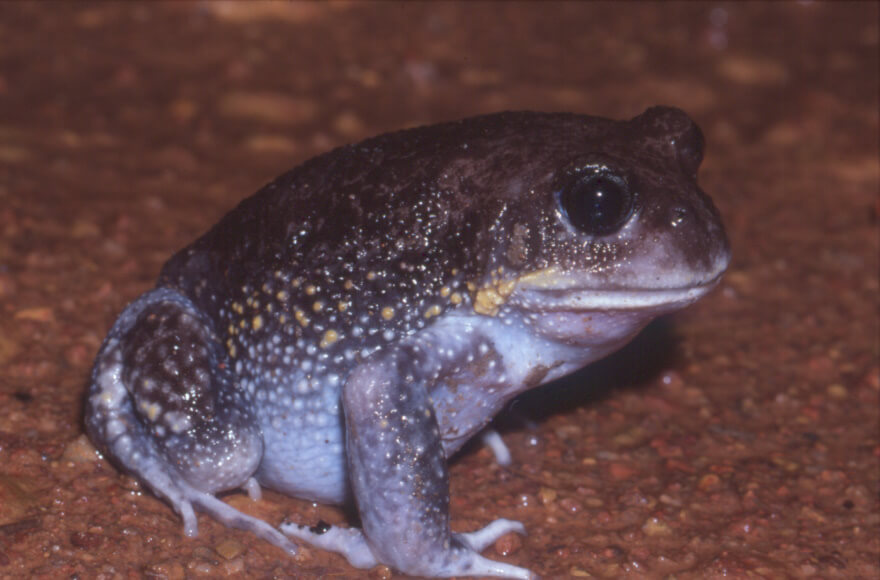
This is a large species to 10 cm long, restricted to south-east NSW and Victoria in two apparent populations with different habitats. The northern population is associated with sandstone habitats that are common in the Sydney Basin Bioregion south to Ulladulla, and the southern population is known from near Narooma to Walhalla in Victoria. It would not be surprising if future genetic analysis finds that the two populations are instead two species. It spends most of its time in soil or below leaf litter (a habit termed ‘fossorial’), moving to water mainly for breeding. It lives to at least 10 years of age.
Sedimentation (dirt flowing into water) and subsequent weed invasion; a reduction in the amount of bushrock due to theft for landscape or destruction in construction works; frequent hazard reduction burning or ‘turbo-mulching’ to reduce bushfire fuels; upgrading fire trails with ‘blue metal’, and spraying bitumen for erosion control all have a negative impact on the habitat of these two species. Housing and industrial land use also reduces the amount of habitat.
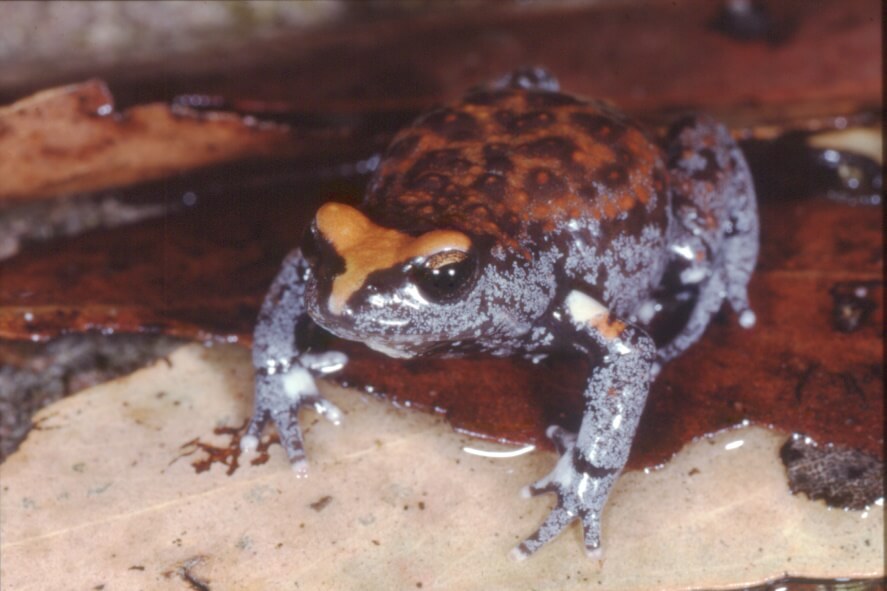
In stark contrast to the large Giant Burrowing Frog, the Red-crowned Toadlet is a small species less than 3cm long. It has a much smaller distribution and is only known from the Greater Sydney region, and again with a strong association with sandstone-based terrain. However, this species is usually found further uphill than Giant Burrowing Frog, nearer ridge tops that have clayey patches for strips of soil that can sometimes be found below the first sandstone escarpment in a valley. These clays are generally derived from small shale lenses in the sandstone.
Although the tadpoles develop in water, the toadlet lays its pea-sized eggs out of water under leaf litter. During heavy rain the tadpoles emerge from the egg capsules and are washed down into the puddles below. These ephemeral puddles need replenishing frequently if the tadpole is to have time to turn into a frog. Their near-ridge-top sandstone habitat is so dry that most people would consider it unsuitable for frogs, but this specialised species has adapted to its challenges.
Threats to this species are similar to those affecting Giant Burrowing Frog and include climate warming, recreational activities that disturb breeding habitat, high intensity fire, and forestry operations. Chytrid fungus is a threat to many frog species and is a major factor in the decline and extinction of some species in relatively recent history.
Threatened Reptiles in the Park
Gerry Swan, Karen Thumm, Jacquie Recsei
Rosenberg’s Goanna, or Heath Monitor Varanus rosenbergi is seldom seen but is known to occur in the Park where large areas of heath vegetation and rock outcrop exist. The species has been recorded at Mt Kuring-gai and on the Galston ridge. This species is also known from nearby Ku-ring-gai Chase and Marramarra National Parks and around Brooklyn. The Heath Monitor shelters in rocky outcrops. Termite mounds are potential nesting sites for this species. It is known from sandstone habitats within but also west of Greater Sydney, the Southern Tablelands, South West Slopes and South Coast as well as the ACT, WA and SA.
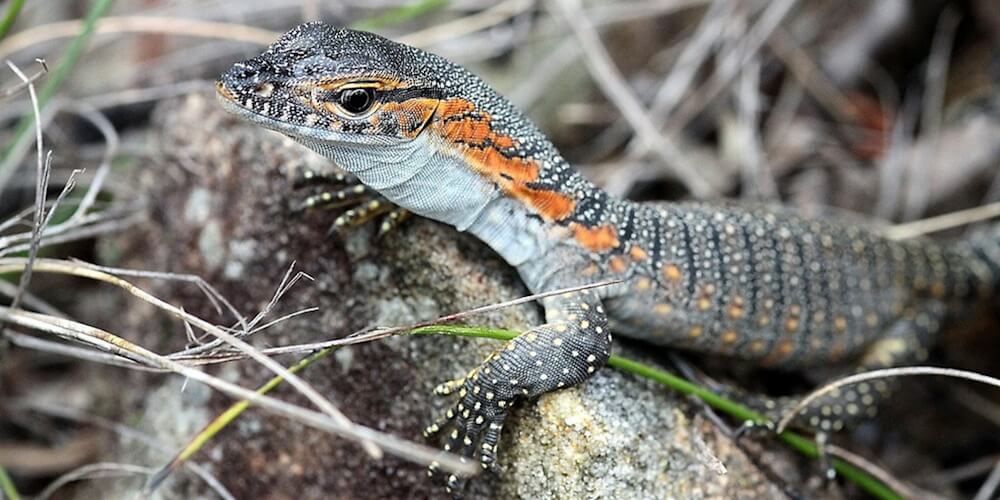
The Heath Monitor is like the common Lace Monitor Varanus varius, however, it is smaller in size (average length 900 mm), has a pale-edge facial stripe, and has a finely spotted (in yellow or white) appearance with continuous narrow dark bars down the tail. The main threats to this goanna are destruction of habitat through land clearing and fragmentation, including for urbanisation. However, removal of fallen timber and termite mounds can be harmful, and it is subject to mortality from motor vehicle strikes and to predation by feral and domestic dogs and cats.
The Endangered and nocturnal Broad-headed Snake Hoplocephalus bungaroides has been claimed to occur in the Park or environs, but there are no BioNet Atlas records of it from Hornsby Shire, or adjoining local government areas except to the north, where there is a single decades-old record from southern Dharug National Park. The Broad-headed Snake is highly selective in its choice of rock retreats, preferring unshaded rock on bare rock surfaces such as rock plates and escarpment tops. Potential habitat for this species has been severely depleted by bushrock removal for landscaping, and by other disturbance such as recreational vehicle use in this sensitive environment.
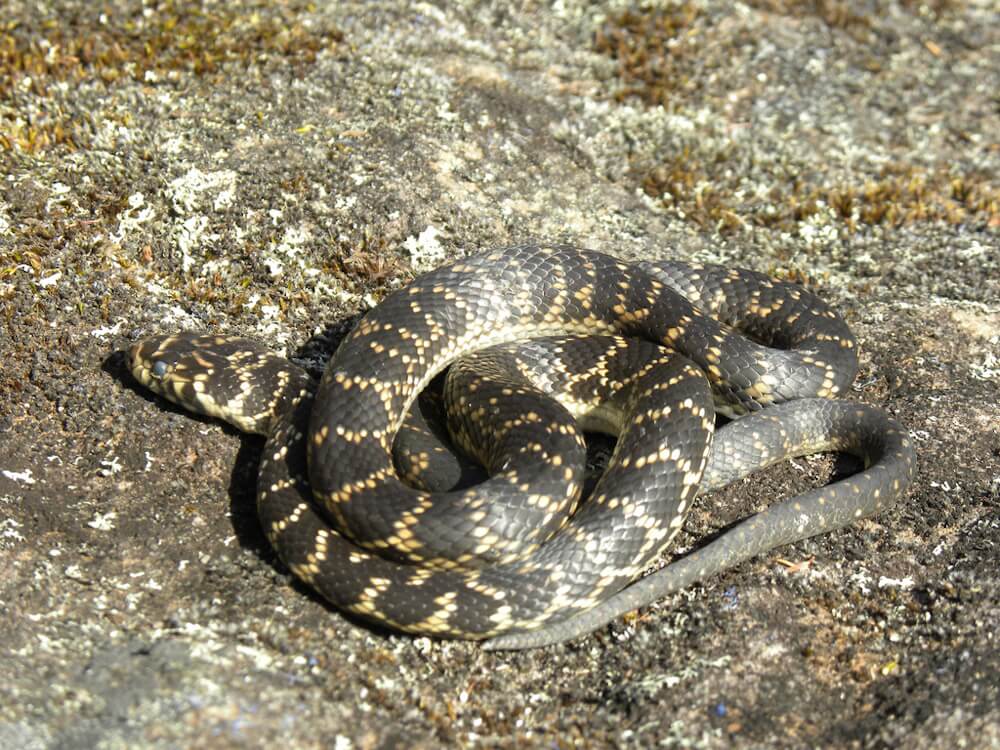
The species is also believed to have declined due to a shift in fire regimes since European colonisation that has resulted in increased vegetation encroachment into the rocky habitats required by this snake for hibernation. Trials in Royal National Park have shown how formerly very exposed rock platforms with limited vegetation cover or low, open-heathland have become progressively more shrubby and even treed due to a changed fire regime. Authorities and researchers have been trying to reinstate historic conditions through a mix of manual vegetation suppression and the appropriate use of fire. This has apparently benefited this species by reinstating the high level of sunlight needed to provide viable overwintering sites. Interestingly, some rare and threatened plant species that occur in the same or adjoining habitat are also believed or known to benefit from fire regimes that maintain a more open, less shrubby and treed habitat with high exposure to sunlight and little or no competition from large shrubs and small trees.
It seems likely that this species once occurred in the Park but that it is now extinct due to habitat degradation and destruction. It’s relatively slow rate of reproduction likely contributed to this decline, and theft by reptile collectors remains an active threat across its range, even within NPWS reserves.
Threatened Mammals in the Park
By Ray Williams
Spotted-tailed Quoll or Tiger Quoll Dasyurus maculatus
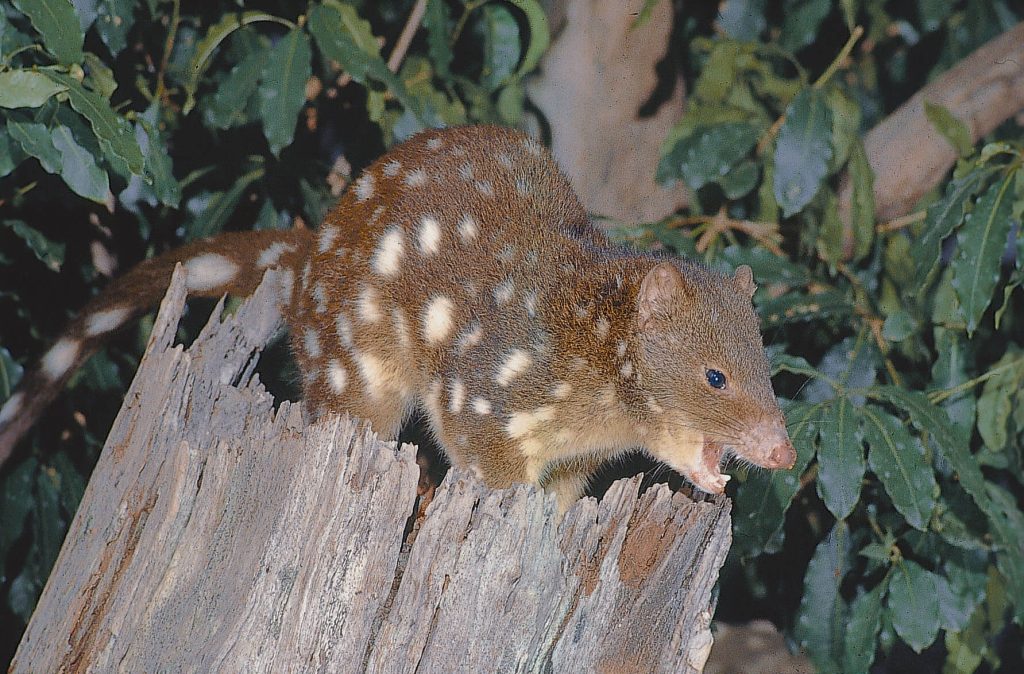
The Spotted-tailed Quoll is classed as Vulnerable owing to a reduction in population numbers and in its historic distribution. This Quoll is a carnivorous marsupial about the size of a cat and is easily distinguished by numerous white spots on the body and by a long tail. Although usually terrestrial, this species is also an adept climber of trees. Populations have declined in the past through loss of habitat and destruction by poultry farmers following raids on their stock. Sightings reported from the mid-1990s include Berowra Waters, Hornsby Heights, Mt Kuring-gai and Ku-ring-gai Chase National Park. The species was confirmed from Berowra Valley NP via a scat sample in mid-2023 (BioNet Atlas search, January 2024).
Eastern Quoll Dasyurus viverrinus
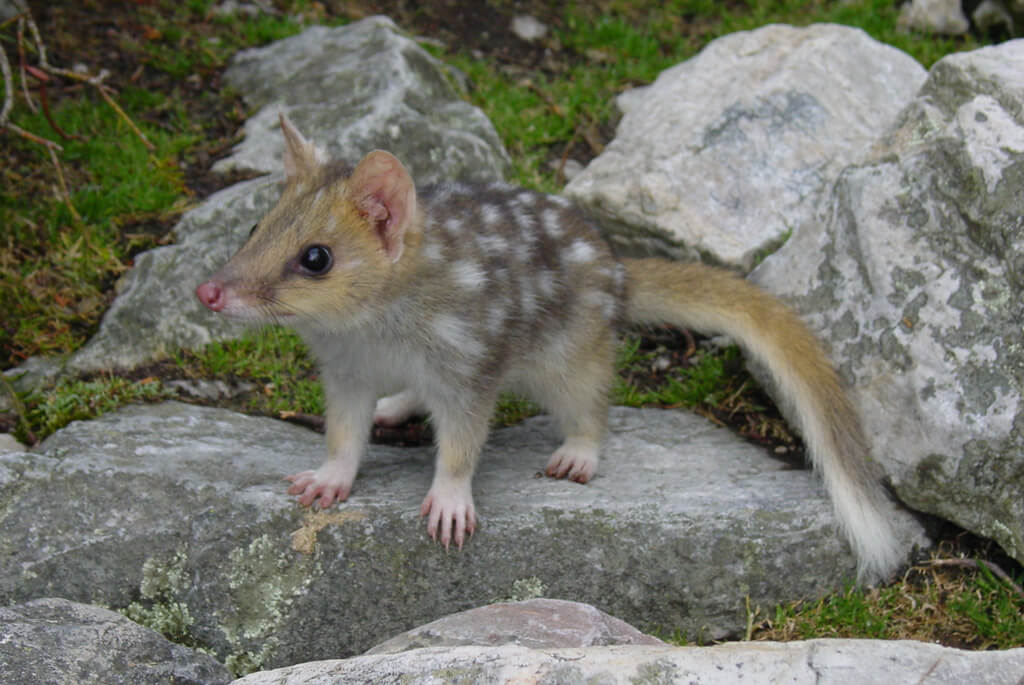
A smaller native ‘cat’, distinguished from the large Tiger Quoll by the absence of spots on its tail, used to occur in the area. The last claimed sighting (unverified) was of an animal caught in a rat trap at Dural Street, Hornsby, in the 1960s. This species is now thought to be extinct in mainland Australia and is subject to a reintroduction project on the NSW South Coast, though initial results have been poor.
Eastern Pygmy-possum Cercartetus nanus

The Eastern Pygmy-possum is a very small mammal that feeds primarily on nectar, pollen and insects. This species does not have a gliding membrane and is more terrestrial in its habits as it will move from one shrub to another by running along the ground. Banksia, Mountain Devil Lambertia formosa, and the flower spikes of grass trees, the Xanthorrhoea family, are known food sources. Following a wildfire in Ku-ring-gai Chase National Park, an Eastern Pygmy-possum was caught near a patch of Sundew plants, the only food source that was available at the time. This species appears to be locally common in parts of Ku-ring-gai Chase National Park and Muogamarra Nature Reserve. A local amateur naturalist observed pygmy possums feeding on banksia plants at Fishponds in 1994. The Eastern Pygmy-possum is listed as Vulnerable.
Koala Phascolarctos cinereus
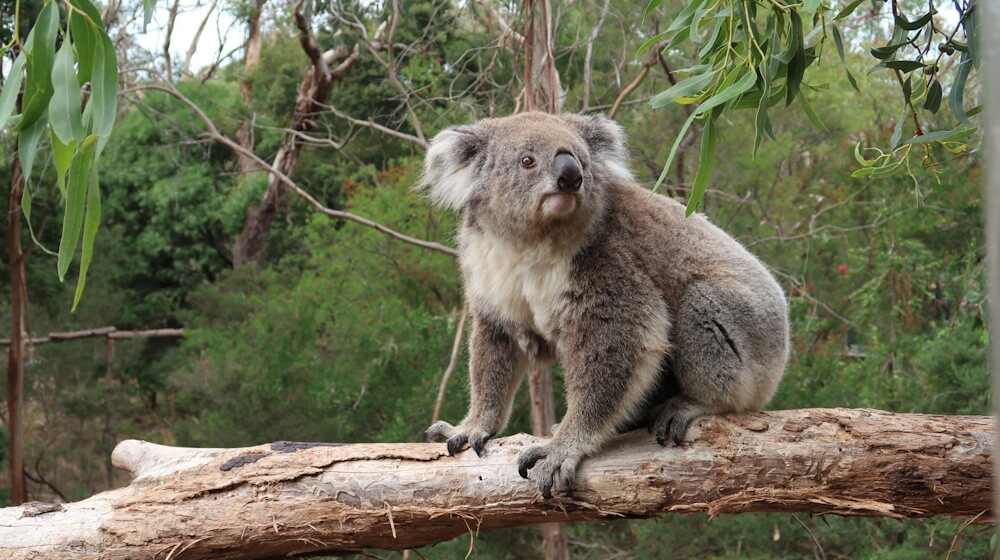
The Koala is now listed as Endangered after having been long listed as Vulnerable. Its threat status was upgraded after the 2019-20 wildfires in south-eastern Australia. It has been infrequently sighted in the Berowra Waters area and Ku-ring-gai Chase and is locally very rare.
Although feeding on a variety of eucalypts, Koala appears to be dependent on the presence of Grey Gums Eucalyptus punctata for continued survival in this region. However, it seems likely that its preferred local habitat and feed tree species are also those that have been most heavily cleared for forestry, farming and later for urbanisation e.g. Blue Gum High Forest (including Glen/Diatreme Forest), Sydney Turpentine-Ironbark Forest, and Coastal Riverflat Eucalypt Forest Threatened Ecological Communities.
The remaining koala habitat is now the primarily sandstone-based bushland reserves of the area. These are much less fertile than the shale and alluvial soils that are primarily outside reserves and are almost entirely cleared except for relatively small remnants. The generally less fertile soils in our reserves cannot support the number or density of koalas that would once have occurred prior to extensive clearing of their preferred habitats. The very infertile Hawkesbury Sandstone flora that dominates our reserves is the least suitable for Koala, but the more fertile Narrabeen Group sediments that occur deeper in valleys and closer to the Hawkesbury River estuary have greater habitat potential and a different suit of tree species.
High intensity fire, dog attack, road deaths and further clearing and fragmentation of habitat are other major threats, as is the disease Chlamydia, which affects many koala populations.
Southern Brown Bandicoot Isoodon obesulus
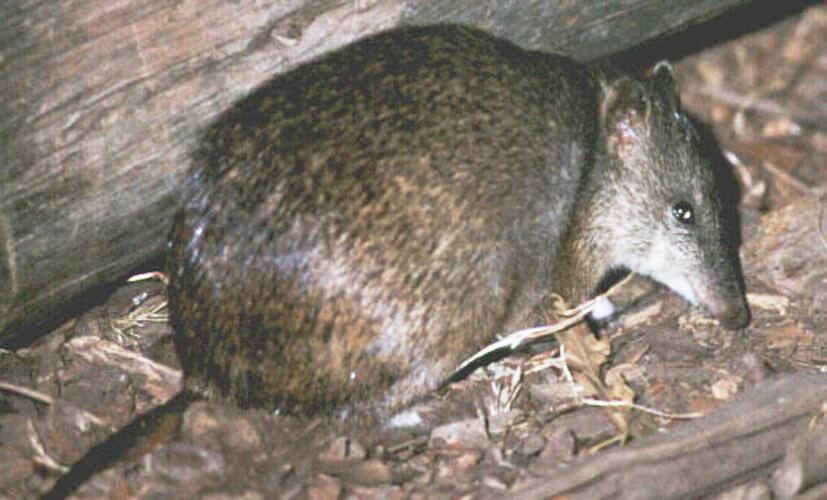
The Southern Brown Bandicoot is listed as an Endangered species. It has not been recorded in Berowra Valley National Park but occurs in nearby Ku-ring-gai Chase National Park. This species appears to be restricted to closed heath and woodland environments on ridgetops and upper slopes. It can be distinguished from the more common Long-nosed Bandicoot by its short, rounded ears as opposed to the long-pointed ears of the Long-nosed Bandicoot. Possible sightings should be reported to the NPWS at Bobbin Head.
Threatened Bat Species
The following species are listed as Vulnerable and may occur within Berowra Valley Regional Park, however their current status in the Park is unknown due to a lack of targeted survey.
Grey-headed Flying-fox Pteropus poliocephalus
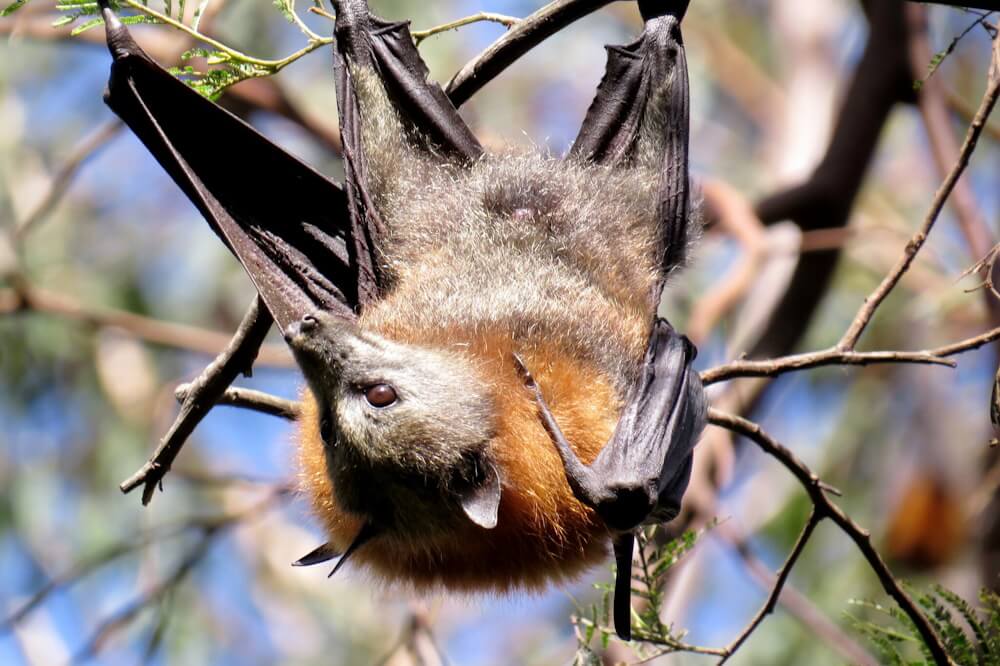
Grey-headed Flying-foxes are a regular and well-known visitor to the region where they feed on eucalypt blossom and fruits (both native and non-native) Most of the bats feeding in the Hornsby Shire fly in from the Gordon colony. “Numbers of 60,000 or more animals have been recorded only three times – in 1996 (60,010 in April); 2000 (69,000 in January) and 2009 (70,000 in February). The camp more commonly peaks between 20,000 and 40,000 animals during summer and the mating season (around March). During winter, the camp usually reduces in numbers and is often empty” (Ecosure, undated). The Grey-headed Flying-fox is currently listed as Vulnerable.
The Little Red Flying-fox Pteropus scapulatus also occurs in the Park but in much smaller numbers and less frequently.
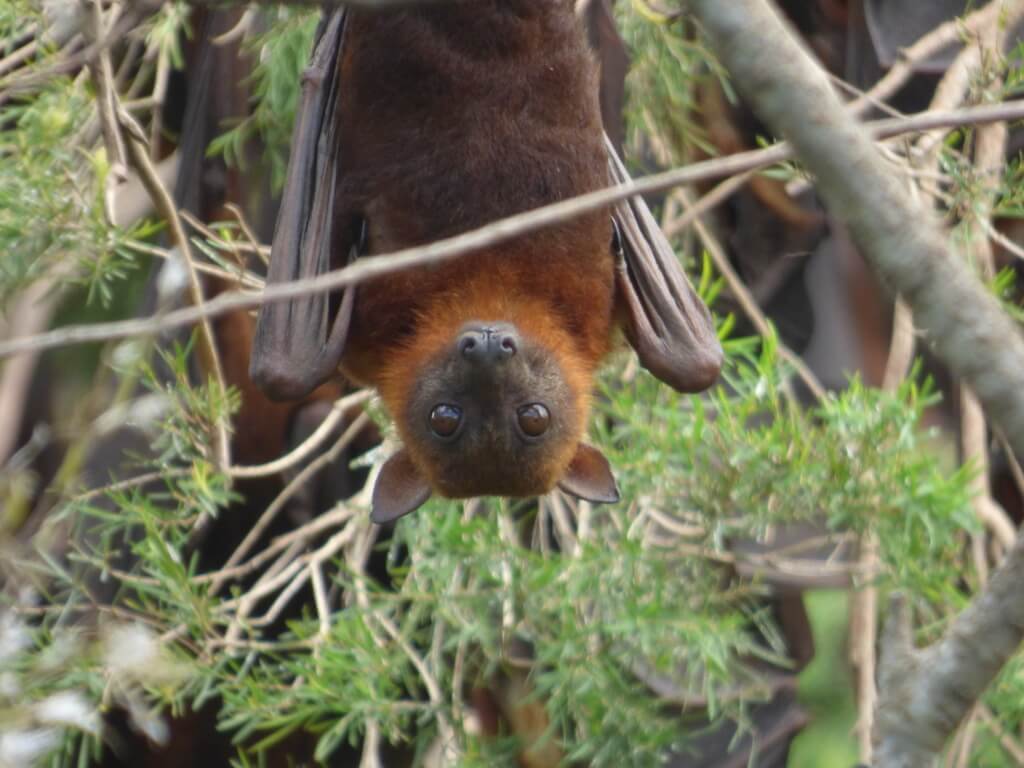
The Large-eared Pied Bat Chalinolobus dwyeri, can be distinguished by its jet-black fur colour and contrasting white ventral stripes extending onto the wing membranes. Roosting in the honeycomb features of shallow sandstone caves in other areas, it is likely to occur within the Berowra Valley. Regional records are known from Palm Beach (1999), Winmalee and the Watagan Mountains (1980–2001).
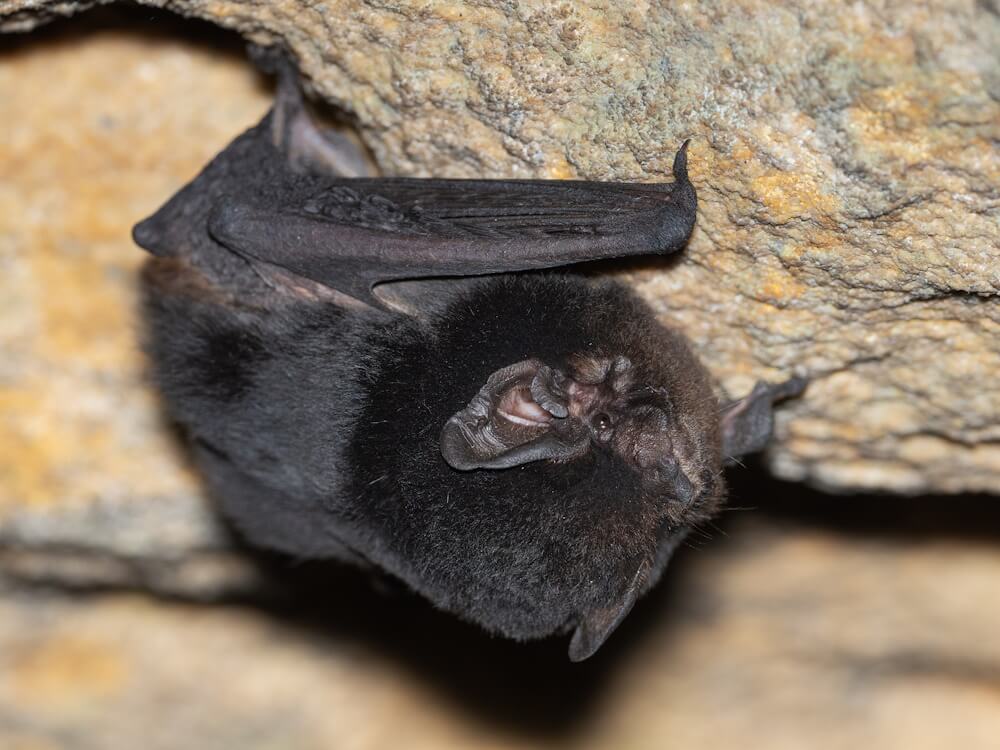
The Eastern Cave Bat Vespadelus troughtoni has been recorded from Ku-ring-gai Chase National Park at West Head. Roosting in the twilight zone of shallow sandstone caves, there is potential for this species to occur along Berowra Valley. The Eastern Cave Bat is a small light-brown coloured species, with an average weight of 6 g and a forearm length of 33-36.5 mm. It is greater in both weight and forearm length than the common Little Forest Bat.
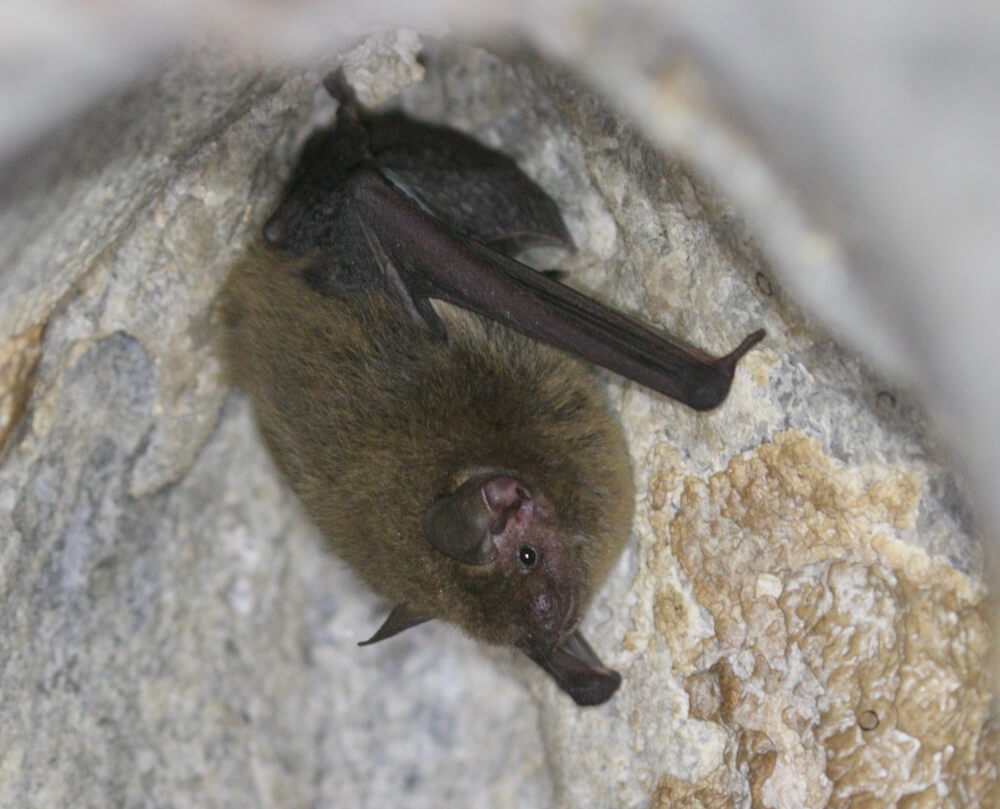
The Southern Myotis or Fishing Bat Myotis macropus (formerly adversus) roosts under bridges, culverts tunnels and caves close to or over permanent water. It has a large foraging range, often flying low over water feeding on flying and aquatic insects as well as small fish. As a large colony has been recorded at Galston (2002) it is likely that this species occurs in the Park.
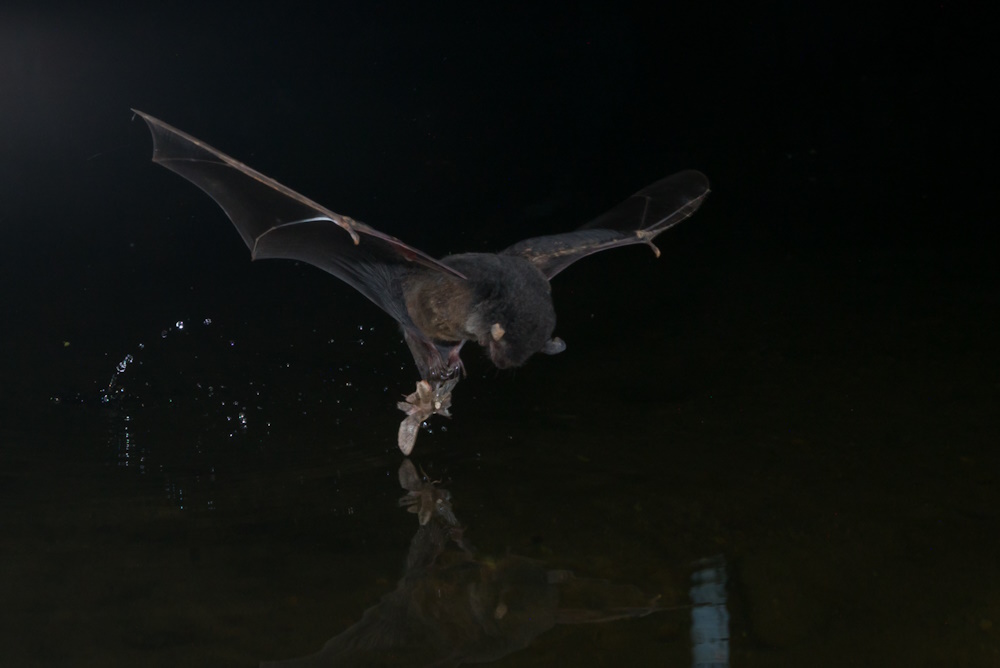
The Greater Broad-nosed Bat Scoteanax rueppellii is one of the larger insectivorous bats, weighing 25-35 g and having a forearm length of 50-56 mm. Identified from the Eastern False Pipistrelle by the lack of a minute second upper incisor tooth, shorter ears, broader nose, and a different penis shape. Although insects make up most of its diet, this species is known to feed on other bats. Very few positive records occur for the region and most are old (Bilgola Beach 1982, East Lindfield 1963).
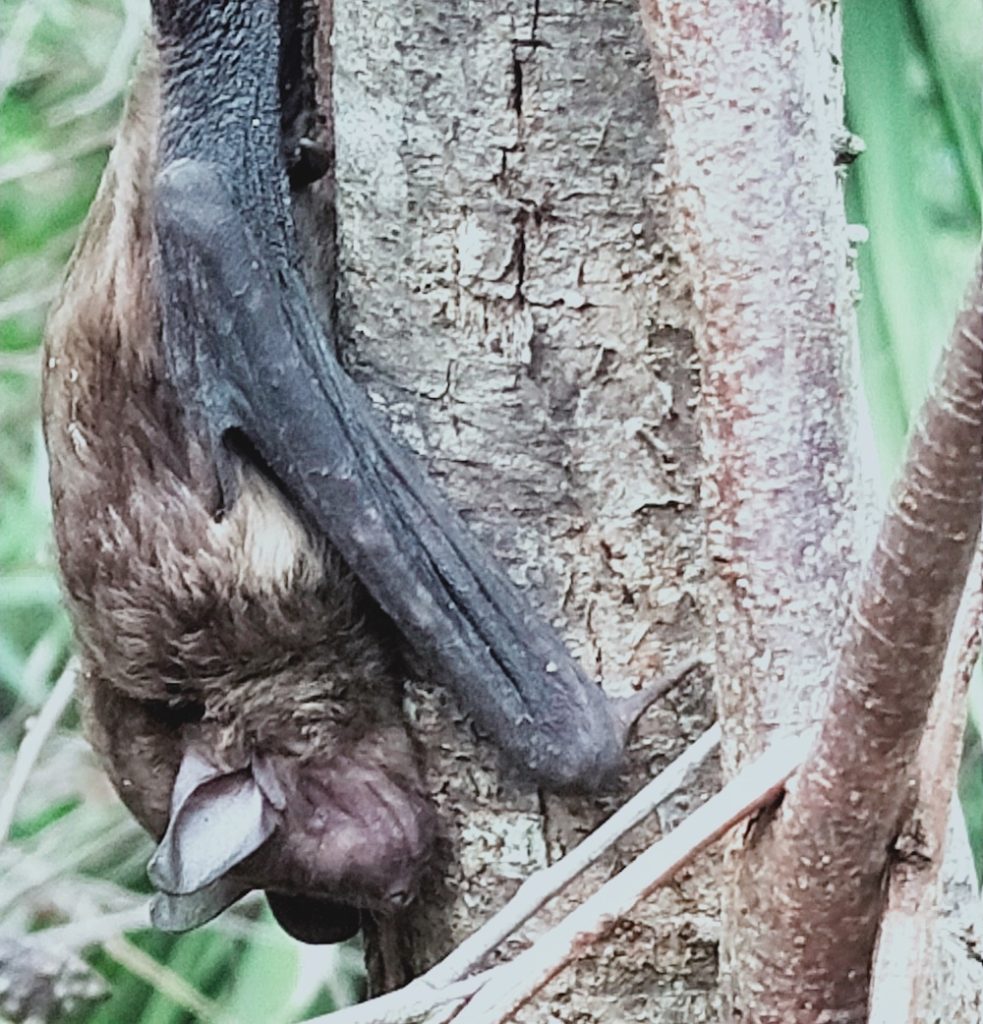
The Schreibers’ Long-fingered Bat Miniopterus schreibersii, formerly known as the Common Bent-wing Bat. Although these bats are regularly recorded, their habit of roosting in large numbers in suitable caves, tunnels, culverts, drains and occasionally buildings make them vulnerable to local extinction if their roost is destroyed. Eastern Bent-wing Bats have been recorded roosting during winter in stormwater drains adjacent to the Park, and they undoubtedly forage throughout the Park. This bat is similar in appearance to the Chocolate Wattled Bat; however, the larger size (weight 10-18 g, forearm 43-48 mm) and wing shape are distinguishing features. The last digit of the third finger is four times longer than the next digit, enabling the wing to be folded back on itself, hence the common name.
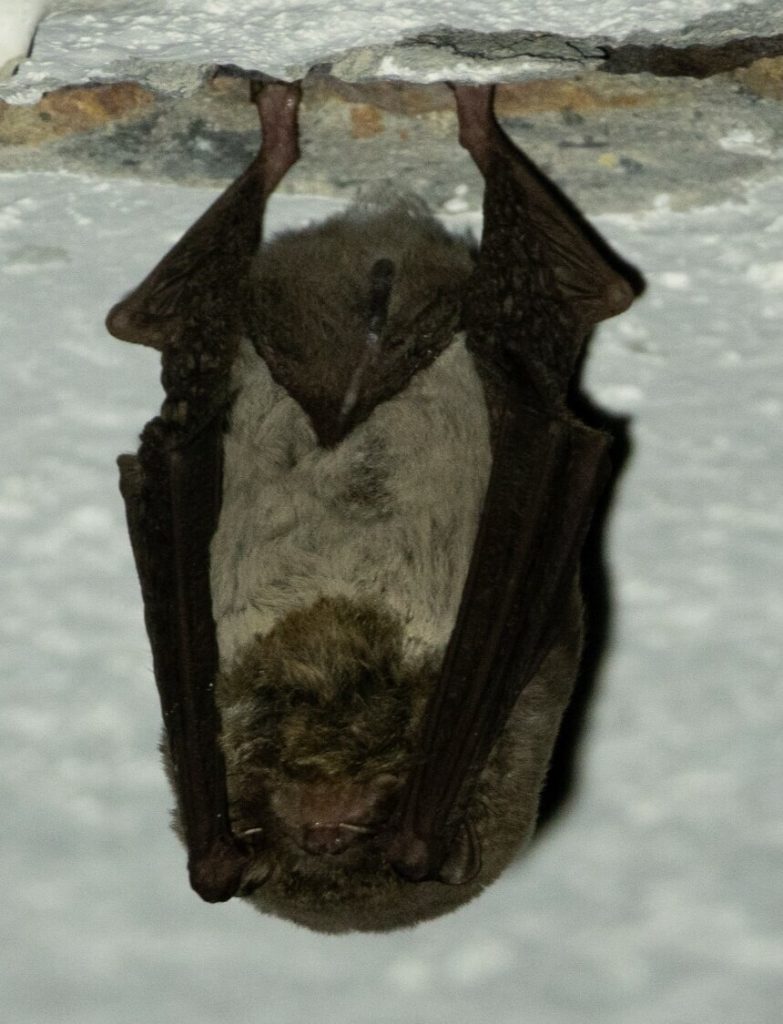
The Eastern False Pipistrelle Falsistrellus tasmaniensis is another large species similar in size and appearance to the Greater Broad-nosed Bat (see above). The only known record for the local region is from Ku-ring-gai Chase National Park at Kalkari in 1985.
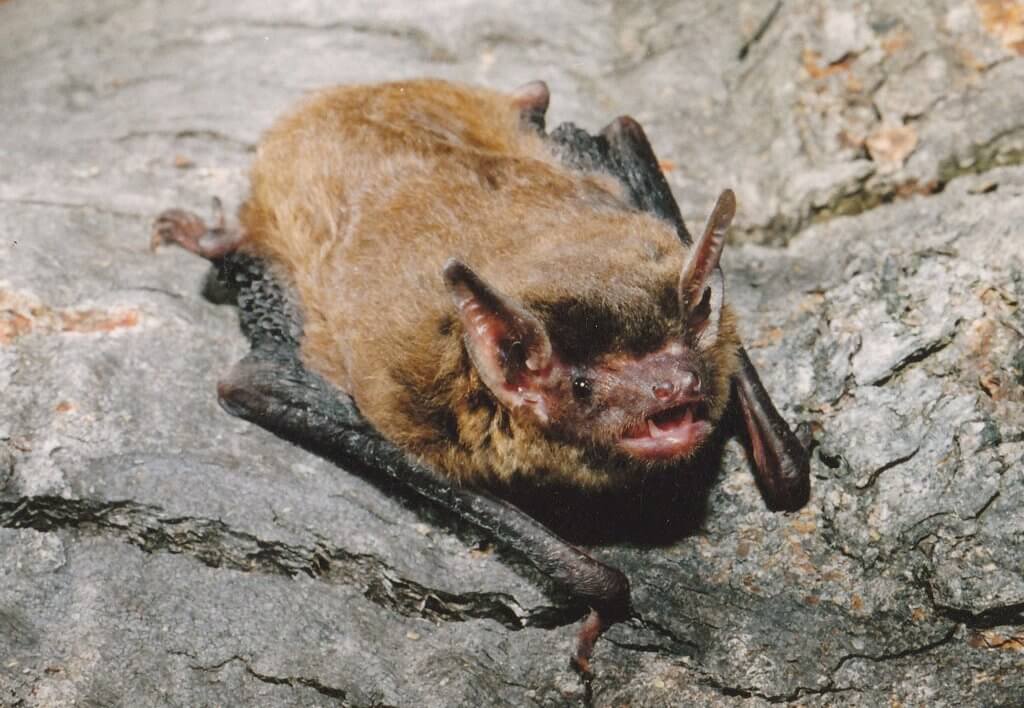
The Eastern-coast Freetail-bat Mormopterus norfolkensis has not been positively recorded within the northern suburbs since Hunters Hill, (1936). Roost sites are known to occur in tree hollows and the roofs of buildings, particularly churches. It appears to be most common on the coastal plains, with several records occurring for the Cumberland Plains, the Central Coast and Hunter Valley. The East-coast Freetail-bat has a larger forearm (36-40 mm) and tail than the Eastern Freetail-bat.
The Yellow-bellied Sheathtail-bat Saccolaimus flaviventris is rarely recorded in the Sydney region, although there are old records from Killara (1948) and Hunters Hill (1965). This is a large and striking species, with contrasting black dorsal fur and white-yellow ventral fur. The tail protrudes through the tail membrane, hence the common name. The average weight is over 30 g and the forearm length 75 mm.
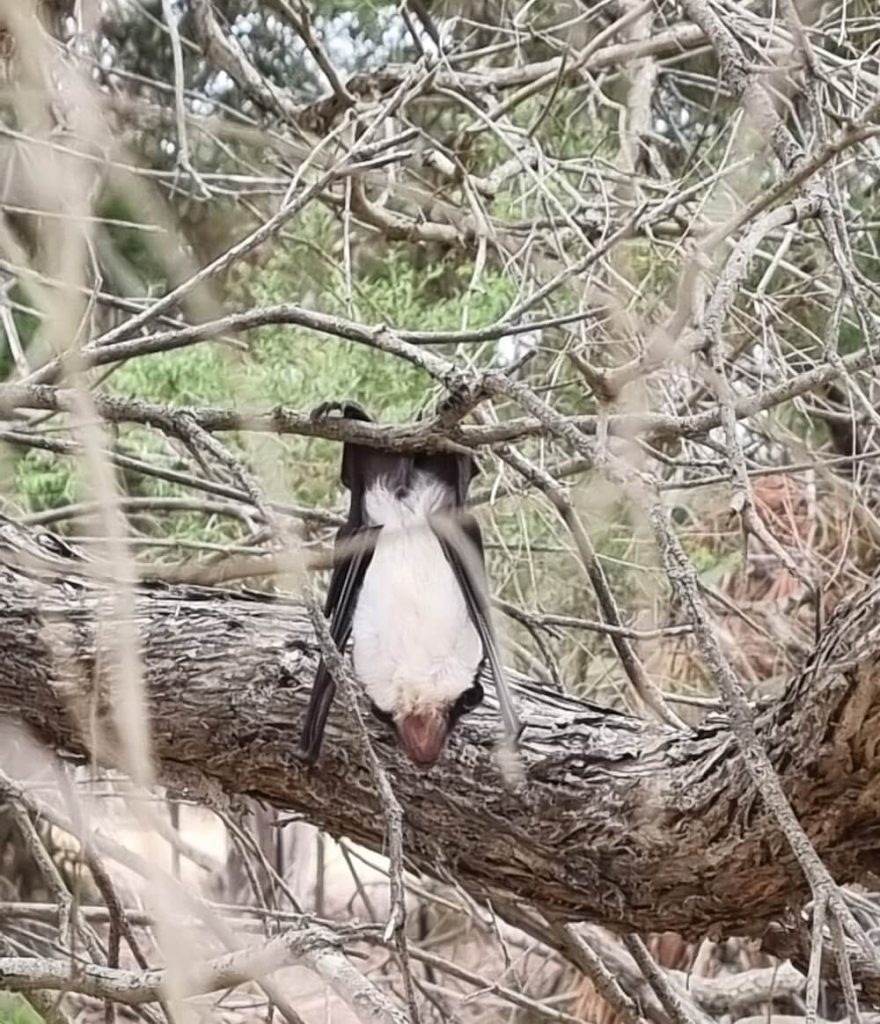
Further Reading


